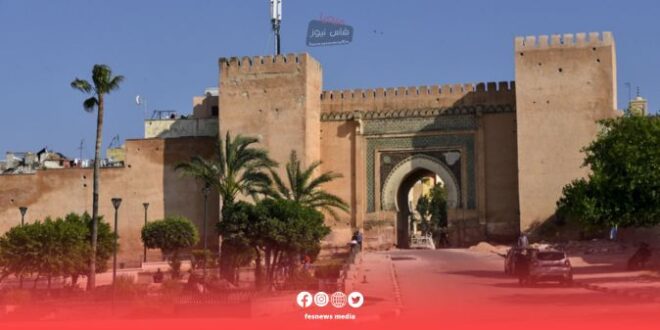As part of efforts to preserve the Kingdom’s cultural and religious heritage, the Ministry of Youth, Culture and Communication, at the request of the Ministry of Endowments and Islamic Affairs, has listed the Bab Bardaïa Mosque in Meknes as a national heritage site.
According to multiple sources, this mosque, located in the heart of the old city of Meknes, is considered a historical landmark in the history of Moroccan engineering and culture.
This step contributes to the preservation of the mosque and various other historic mosques for future generations, and enhances their role as witnesses of Morocco’s architectural and spiritual history. The Bab Bredaïa Mosque dates back to the reign of Sultan Moulay Ismail, one of the prominent figures in Moroccan history, and was opened in 1709 by order of Khenata bint Bakkar, one of the sultan’s wives.
During its construction period, this mosque played a key role in the urban landscape of Meknes, which was then the capital of the Kingdom, and its minaret was a symbol of the power and greatness of the Alaouite rule, the mosque extends over an area of more than 620 square meters, and was built according to the Marinid architectural design, and this landmark has received the attention of many sultans over the years, including Sultan Moulay Mohammed bin Abdullah and Sultan Moulay Youssef, who carried out restoration work.
Historically, the mosque has faced many challenges, including the collapse of its silo in 2010 as a result of heavy rains. However, under the directives of King Mohammed VI, the minaret was rebuilt according to its historical specifications, in order to preserve its authenticity.
The name “Bab Bardaïa” comes from the massive historic gate built by Sultan Moulay Ismail in the 17th century, named after the saddle manufacturers who lived in the neighboring square. The gate is characterized by its monumental shape that dominates the north of the city, with two dense towers accentuating the aesthetic of the landmark.
The inclusion of the Bab Bardeine mosque is part of a comprehensive strategy to preserve Morocco’s religious heritage. In the city of Meknes, three other mosques have been included in the national heritage list: the Najjarin, Lalla Ouda and Ruwi mosques. These efforts are not limited to Meknes, but also include other religious monuments in the cities of Fez and Marrakech.
In a media statement, Fouad Mahdaoui, Regional Director of Culture in Fez-Meknes, emphasized that protecting historical buildings and monuments is a key priority for the Ministry of Youth, Culture and Communication, as part of the implementation of Law 80-22 as amended and supplemented, adding that this process is carried out in cooperation with several government sectors that oversee various types and forms of built and urban heritage.
Mahdaoui explained that the ministry has included 11 mosques in the national heritage list, all located in imperial cities, in order to preserve their historical value, noting that this process is considered a first stage, which aims to include a larger number of historical mosques, which according to the Ministry of Endowments and Islamic Affairs could reach 976 mosques.
These mosques, selected for their cultural and historical value, are a reference to the history of Islamic art and the knowledge and skills of the Kingdom’s traditional craftsmen, he said.
He emphasized that these mosques, chosen for their cultural and historical value, are a reference to the history of Islamic art and the knowledge, engineering and decorative skills of the Kingdom’s traditional artisans.
“The attention paid to religious architecture reflects the efforts made by the Ministry of Youth, Culture and Communication to preserve historical monuments and the historic urban fabric, especially the legal protection of our national heritage,” he concluded.
Source : Fez News Media
 فاس نيوز ميديا جريدة الكترونية جهوية تعنى بشؤون و أخبار جهة فاس مكناس – متجددة على مدار الساعة
فاس نيوز ميديا جريدة الكترونية جهوية تعنى بشؤون و أخبار جهة فاس مكناس – متجددة على مدار الساعة













